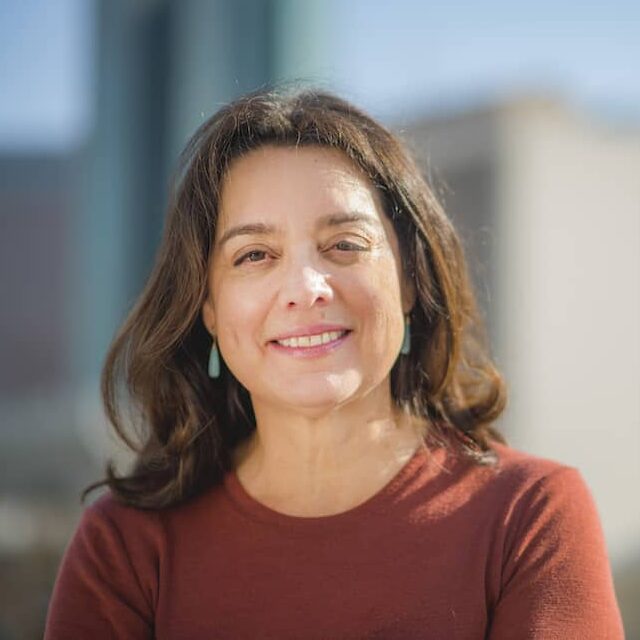On Thursday, we launched “Chasing Progress,” our latest reporting collaboration with partner newsrooms across the state.
Chasing Progress examines the social, economic and health equity of Black and Latino Coloradans over the last decade. It’s a multi-story project that will roll out over the coming weeks and months — and it gave me an experience I’ve never had in more than 30 years of reporting.
We begin the series with our overview of progress made and work remaining, and with Chalkbeat’s closer look at one of the true bright spots of the decade: the double-digit increase in Latino high school graduation rates.
Next week, The Colorado Sun will share its deeper dive into the persistent barriers to Black and Latino homeownership, which is the main path to generational wealth. Kaiser Health News will bring us the latest on efforts to reduce Black infant mortality rates, perhaps the most troubling manifestation of structural racism. Still more is coming.
I keep thinking of something I heard while half-listening to a national panel on health equity: “Data tells us how we are valued.” I don’t recall who said it, but it was one of those sentences that emerged from the din like a ray of light, instantly illuminating.
Over the course of months now, my colleague Burt Hubbard and I have been digging into data, much of it from the U.S. Census Bureau’s one- and five-year American Community Survey, all of it around markers of social mobility and opportunity. We looked at poverty rates, homeownership, homeownership by county, educational attainment by gender, by national origin, by age cohort, by enrollment and persistence and completion rates. We looked at median household income, earnings and unemployment. We compared everything to the U.S. as a whole. We sorted all that data by Black, Latino and white to better understand where progress toward equity was made in the last decade and where gaps remain. Had the data not been unreliable, we would have done the same for our state’s relatively small Indigenous and Asian American Pacific Islander communities.
Burt and I shared everything with our newsroom partners because we all needed to know what happened before we could begin trying to understand why and how and what’s working and what’s next. That latter work of understanding means hours of interviews. For just this first round of stories, I talked to more than 30 people and our reporting colleagues at The Sun, Kaiser Health News and Chalkbeat talked to dozens more. We all read studies and reports and analyses. Think of it as peeling an onion, I told people I interviewed. Layer by layer, we search for clarity.
Helping us find that clarity were members of the Black and Latinx Voices initiative. You may recall that last year, Colorado Media Project, News Voices: Colorado and COLab partnered in a series of working groups with Black community members and journalists and, a few months later, with Latino journalists and community members. Together we envisioned a new kind of relationship between local newsrooms and the communities of color we for too long sidelined and stereotyped.
Voices members Gloria Neal, Tashan Montgomery, Tiya Trent, Polly Baca, Erika Martinez, Patricia Barela Rivera and Carmen Palacios-Rodriguez joined us in our early brainstorming sessions. They were with us when we had a conversation with the state demographer. They had access to our story-idea spreadsheet. We learned from them. They learned from us. I have never had that kind of side-by-side experience. I am grateful for it.
I hope you take the time to read Chasing Progress stories because we all share this state. And inequity — the denial, intended or otherwise, of equal opportunity to communities of color — is not something that only affects Coloradans of color. Inequity shapes our present. It shapes our shared future. Close equity gaps, says Colorado Department of Higher Education Executive Director Angie Paccione, and “in a nutshell, Colorado will be a better state.
“I know it sounds like pie in the sky. But can you imagine if every single student who graduates from high school went on to post-secondary, instead of only 50% last year? Okay, let’s not even say 100%, let’s go 80%. Imagine if 30% more of our high school graduates went on to something post-secondary, got a credential, got a certificate, got a degree. Imagine the activation of their talent.”
I don’t have to imagine. I spent time with Maria Bocanegra Tejeda, the luminous young woman you see in the picture above. She is the eldest daughter of Guadalupe Bocanegra and Raquel Tejeda. Last month, she became the first in her family to graduate from college with her bachelor’s degree. She persevered, despite real obstacles, with federal financial aid and scholarships and college wraparound services and programs to help first-generation students succeed. Her individual drive and her family’s encouragement married to the right federal, state and university support activated a talent that shines. A blossoming is just beginning. Equity will allow us to share the fruit.
I close as we usually do here at COLab, with the acknowledgement that our work is possible because you make it possible. As donors. Readers. Listeners. Viewers. Sharers of stories. Givers of feedback. Believers in local news. Thank you. I offer a special thank you to Ryan Ross, president and CEO of the Urban Leadership Foundation. He came up with the title “Chasing Progress.” And, if you read Chasing Progress stories and think, ‘oh, they missed this or they need to look into that,’ you know where to find us.
This post was sent as a letter to our email subscribers on Friday, June 3, 2022. Join our email list to learn more about COLab and the work we are doing.




